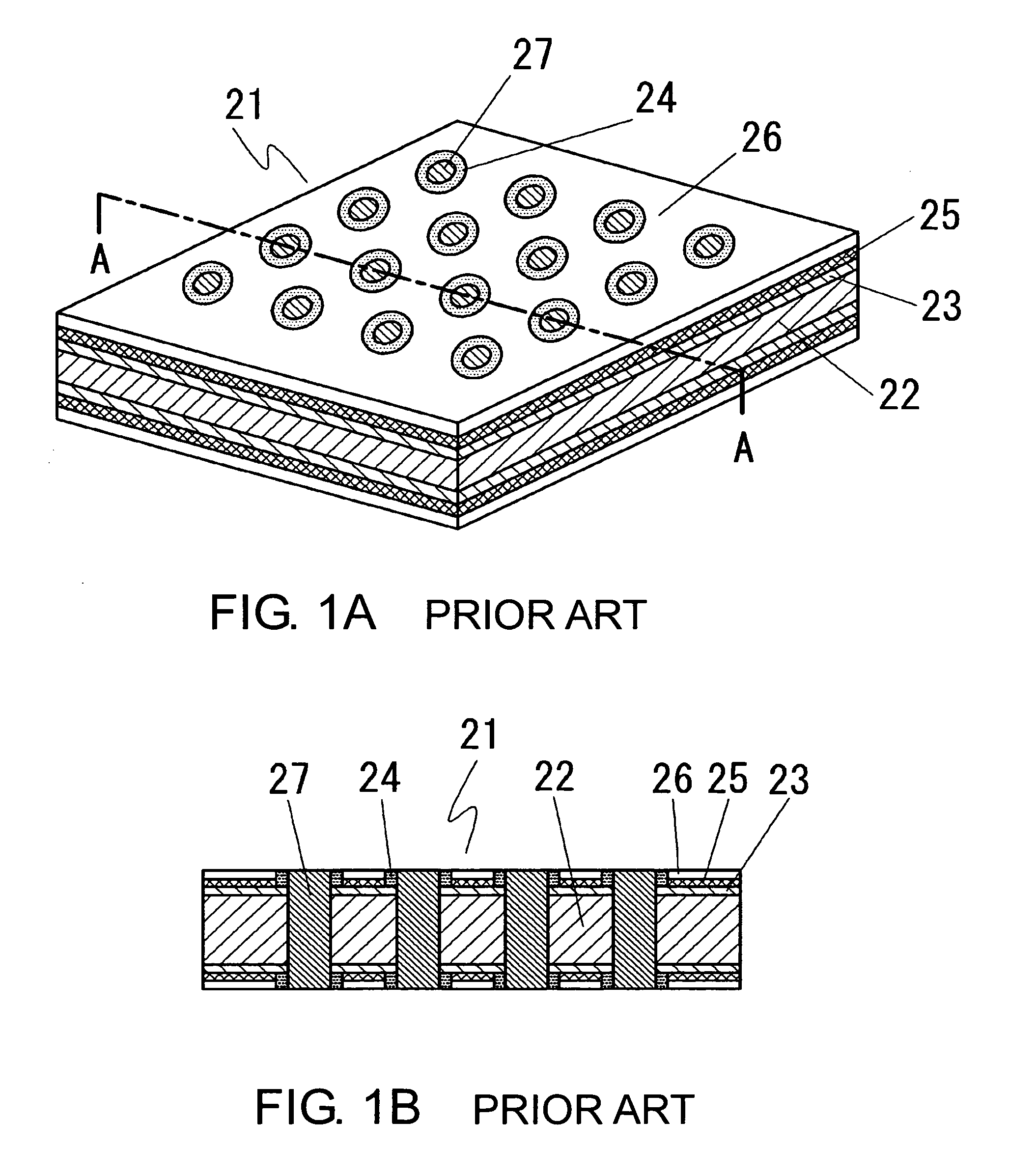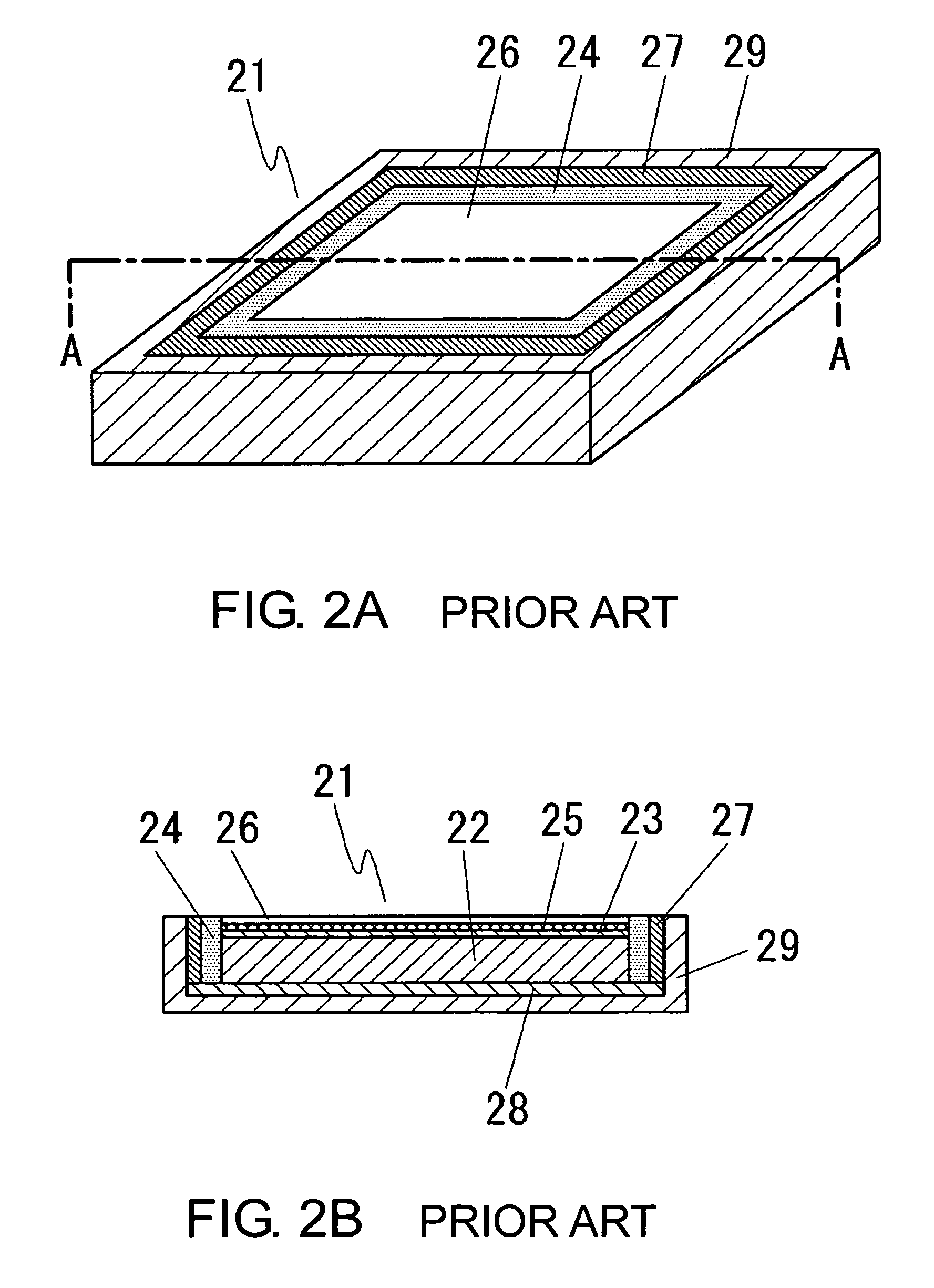Solid electrolytic capacitor
a technology of electrolytic capacitor and solid electrolytic capacitor, which is applied in the direction of liquid electrolytic capacitor, fixed capacitor, fixed capacitor details, etc., can solve the problem that two techniques cannot be simply combined, and achieve the effect of reducing esl, reducing esl, and increasing esr
- Summary
- Abstract
- Description
- Claims
- Application Information
AI Technical Summary
Benefits of technology
Problems solved by technology
Method used
Image
Examples
example 1
[0092]The solid electrolytic capacitor according to the foregoing first embodiment was fabricated by the following method and its electrical characteristics were measured. At first, a foil-like aluminum base was formed porous and, then, anodized films were formed at both surfaces thereof. Herein, the foil-like aluminum base is commercialized as a material for an aluminum electrolytic capacitor, wherein the nominal anodization voltage when forming anodized films at its surfaces is 3V, the capacitance per unit area (cm2) is 220 μF, and the thickness is 70 μm. This foil-like aluminum base was cut into a square shape with a width of 4.5 mm and a length of 4.5 mm and it was determined to form a cathode portion in a square region with a width of 3.2 mm and a length of 3.2 mm in the center of the aluminum base on each side thereof. Then, openings in the form of circular through holes were formed in the aluminum base in its thickness direction, using as the centers of circles the positions ...
example 2
[0097]The solid electrolytic capacitor according to the foregoing second embodiment was fabricated and its electrical characteristics were measured. The size and shape of the fabricated solid electrolytic capacitor and the fabrication sequence were substantially the same as those in Example 1. However, circular openings formed in an aluminum base in its thickness direction using as the centers of circles the positions of the four vertices of a 3.2 mm square region determined for a cathode portion were through holes each having a diameter of 0.8 mm. By setting the diameter of each opening to be about three times greater than that in Example 1, the ratio of the openings was increased to 25%. The number of solid electrolytic capacitors fabricated and used in the measurement was 30 equal to that in Example 1. Measurement items and a measurement method were also the same as those in Example 1. The average values of the respective characteristics of the 30 solid electrolytic capacitors ar...
example 3
[0098]The solid electrolytic capacitor according to the foregoing third embodiment was fabricated and its electrical characteristics were measured. The size and shape of the fabricated solid electrolytic capacitor and the fabrication sequence were substantially the same as those in Example 1. However, instead of the circular openings, square openings each having a width of 0.35 mm and a length of 0.35 mm were formed at four corners of an aluminum base, in its thickness direction, having a width of 4.5 mm and a length of 4.5 mm. A region of each opening was located only at an anode portion on the aluminum base and did not reach a cathode portion or an insulator layer. Therefore, there was no region occupied by the openings in a region where the anode portion and the cathode portion faced each other and thus the ratio of the openings was 0%.
[0099]The openings and the cathode portions were isolated from each other by the insulator layers, but when forming metal layers each having a thi...
PUM
| Property | Measurement | Unit |
|---|---|---|
| thickness | aaaaa | aaaaa |
| capacitance | aaaaa | aaaaa |
| length | aaaaa | aaaaa |
Abstract
Description
Claims
Application Information
 Login to View More
Login to View More - R&D
- Intellectual Property
- Life Sciences
- Materials
- Tech Scout
- Unparalleled Data Quality
- Higher Quality Content
- 60% Fewer Hallucinations
Browse by: Latest US Patents, China's latest patents, Technical Efficacy Thesaurus, Application Domain, Technology Topic, Popular Technical Reports.
© 2025 PatSnap. All rights reserved.Legal|Privacy policy|Modern Slavery Act Transparency Statement|Sitemap|About US| Contact US: help@patsnap.com



